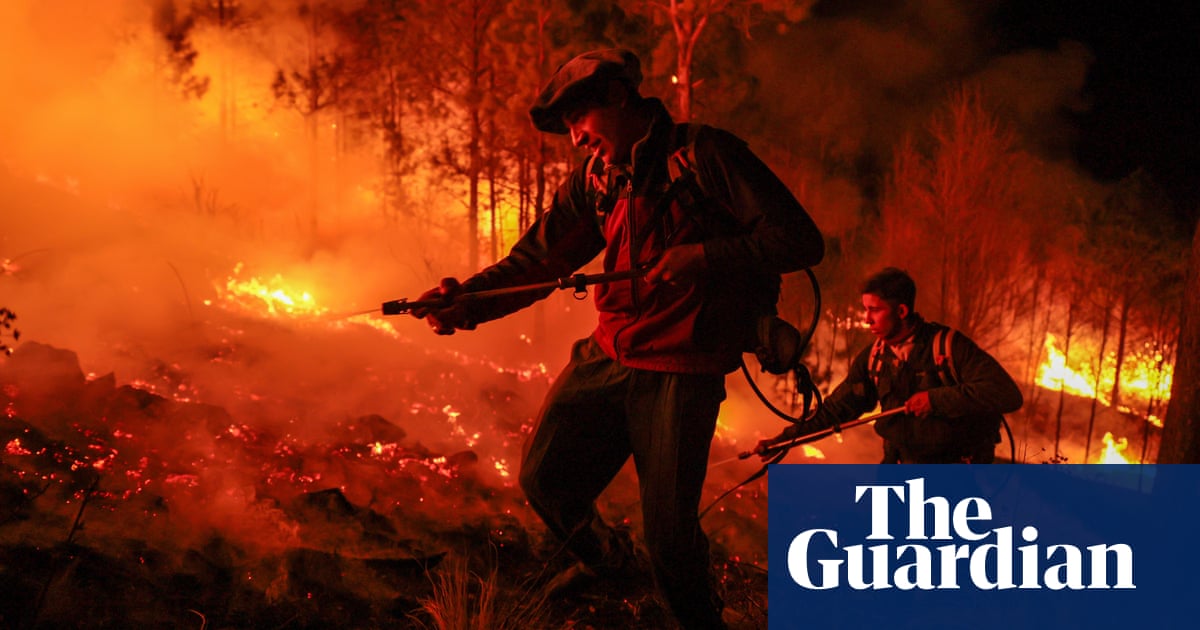- cross-posted to:
- [email protected]
- cross-posted to:
- [email protected]
Many of Earth’s “vital signs” have hit record extremes, indicating that “the future of humanity hangs in the balance”, a group of the world’s most senior climate experts have said.
More and more scientists are now looking into the possibility of societal collapse, says the report, which assessed 35 vital signs in 2023 and found that 25 were worse than ever recorded, including carbon dioxide levels and human population. This indicates a “critical and unpredictable new phase of the climate crisis”, it says.
The temperature of Earth’s surface and oceans hit an all-time high, driven by record burning of fossil fuels, the report found. Human population is increasing at a rate of approximately 200,000 people a day and the number of cattle and sheep by 170,000 a day, all adding to record greenhouse gas emissions.



CO2 increase causes an increase in crop yield.
You know what doesn’t increase crop yield? Heat stress.
You know what else doesn’t increase crop yield? Droughts along with that heat stress.
The garden I put out didn’t do anything this year because it was just so hot and dry for so long.
Luckily the inundations should guarantee great yields next year!
Nor does cold stress. Why again do we only grow crops in the summer?
Not without water
Good thing higher temperatures mean more water in the atmosphere then.
There is a finite amount of H2O on earth, and climate change is altering weather patterns that used to be reliable. Increased evaporation in no way guarantees healthy ecosystems where humans can survive.
CO2 also lowers nutrient density despite increasing total size and weight of crops, meaning you have fewer nutrients per calorie and per pound. Even if you could spin this into a positive, all crops have the same vulnerabilities to heat stress, drought, and unpredictable seasons, all of which are increased by excess CO2.
Even with crispr changing the timeline to create new crops that might handle the new climate every year to be incredibly short, theres not enough time to produce and distribute those new versions before the climate has changed enough to require yet newer versions of said crops.
But good news, bugs and algae will be plentiful. hope you like algae bars with insect protein bars as a snack.
Well, so many people complain about starvation that I just figured there’d be some celebration of our increase in caloric yields per acre.
Yes, we do need other fertilizers to get more nutrients into the food, but it doesn’t hurt to have more basic carbohydrates available.
If you eat just rabbits, nothing else, just lean rabbit meat you will starve to death
It doesn’t matter if you eat 2000 or 10000 kcal of rabbit, if you don’t get more nutritious food, you will die of starvation and your body will waste away.
More calories by itself isn’t a good thing.
You know when we first started seeing growing populations and development of agriculture? When the climate started an exceptionally long stable period. Guess what’s going put of the window now? Planting for draught because that’s the “new normal” won’t get you far if the next year happens to be the wettest on record. Let alone that stronger storms than ever seen before aren’t exactly great for harvests either. And that’s just agriculture. Climate related disasters can wipe out key infrastructure, with unexpected consequences down the line (e.g. no car production because of a certain specific part of almost all cars comes from that one specific place). And then there’s the refugee problem on top of all that.